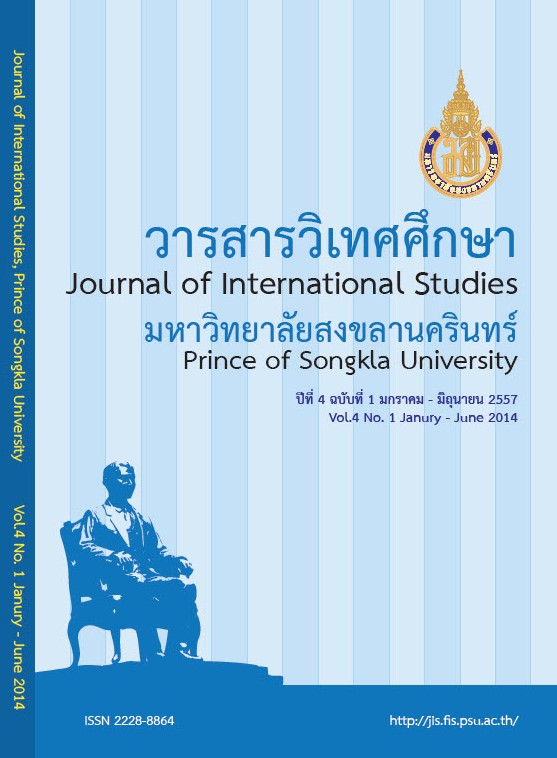The Shamanic Ritual Specialists in the East Coast of Korea; An Hereditary or Shamanic Ritual Tradition?
Main Article Content
Abstract
As Korean folk beliefs have been little studied in academic literature, Korean ritual specialists, or shamen, are also not wellknown. Therefore, it was necessary to do an ethnographic study in a village to figure out how they work. Based on a field observation conducted in 2007, a specific ritual tradition in East coast of the Korean peninsula has been studied. The observation has been carried out at certain villages in North Gyeongsang which have kept a shamanic ritual for the fishermen’s welfare in their villages. The ritual was performed by a troop of Seseubmudang, hereditary
shamans. An ethnographic approach is adopted to study the function of “hereditary” shamans and how they communicate with divinity even in their “normal” state. This article presents one of the East Coast ceremonies called byeolsin-gut through which this type of shaman can play an intermediary role for the benefit of the villagers.
Article Details
Statements and opinions expressed in articles herein are those of the authors and do not necessarily reflect the position of the editors or publisher.
Article, information, text, image, etc. which are published in Journal of International Studies, belong to Journal of International Studies. If anybody or any organization would like to use part or whole of them, they must receive written permission from Journal of International Studies before usage.
References
BAK (PARK) B. (1973). The narrative of the "Princess abandoned" and mediums through the history of Korea, Seoul, Yonsei University Museum. p. 146.
BEAUD, S. (1996). « L’usage de l’entretien en sciences sociales. Plaidoyer pour l’ entretien ethnographique », Politix, vol. 9, N° 35. pp. 226 – 257.
GUILLEMOZ, A. (1983). Les algues, les anciens, les dieux, Paris, Le Léopard d’Or. p. 318.
GUILLEMOZ, A. (2010). La Chamane à l’éventail : Récit de vie d’une mudang coréenne suivi de la chamane et l’ethnologue, Paris, édition Imago. p. 202.
GUILLEMOZ, A. (1982). « Chamanesses et chamanes coréens », L'Ethnographie, 87-88, pp. 175-187.
GUILLEMOZ, A. (1992). « Le chamanisme coréen », des Cahiers d’Extrême-Asie, vol. 6 (1991-1992), revue bilingue de l’Ecole Française d’Extrême-Orient, Section de Kyoto.
HAMAYON, R. (1995). « Le Chamanisme sibérien: réflexion sur un médium », dans La Recherche, n°275. pp. 416-422.
HAMAYON, R. (1998). « Le sens de l'« alliance » religieuse : « Mari » d'esprit, « femme » de dieu », Anthropologie et Sociétés 22, 12. pp. 25-48.
JEONG H. Médiation et construction du patrimoine culturel et artistique de byeolsin-gut (rituel chamanique) de la
côte Est (Donghae) de Corée - Une étude sur l'évolution socioculturelle d’un rituel chamanique vers un patrimoine culturel immatérie, Thèse, l’Université Paris 7.
Lot-Falk, E. : « A propos du terme chamane » in Etudes mongloes et sibériennes, n° 8, Paris. pp. 7-18.


